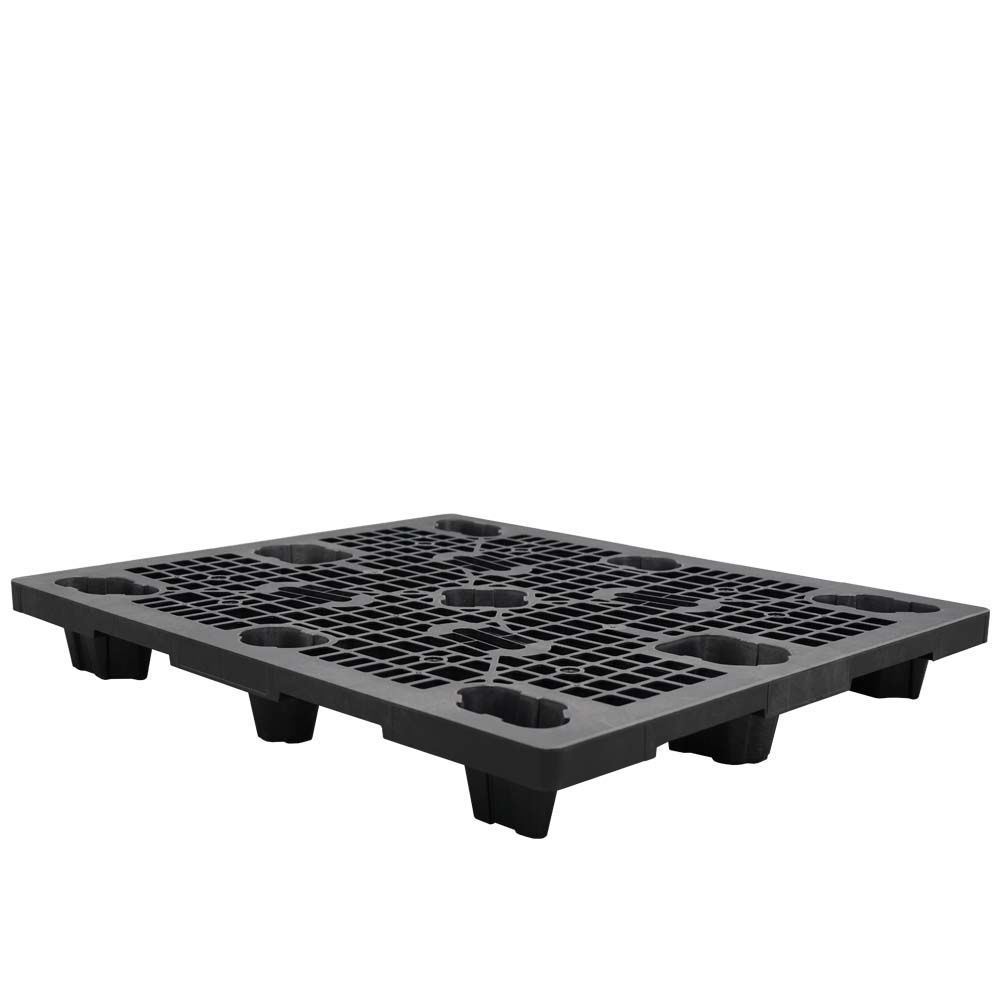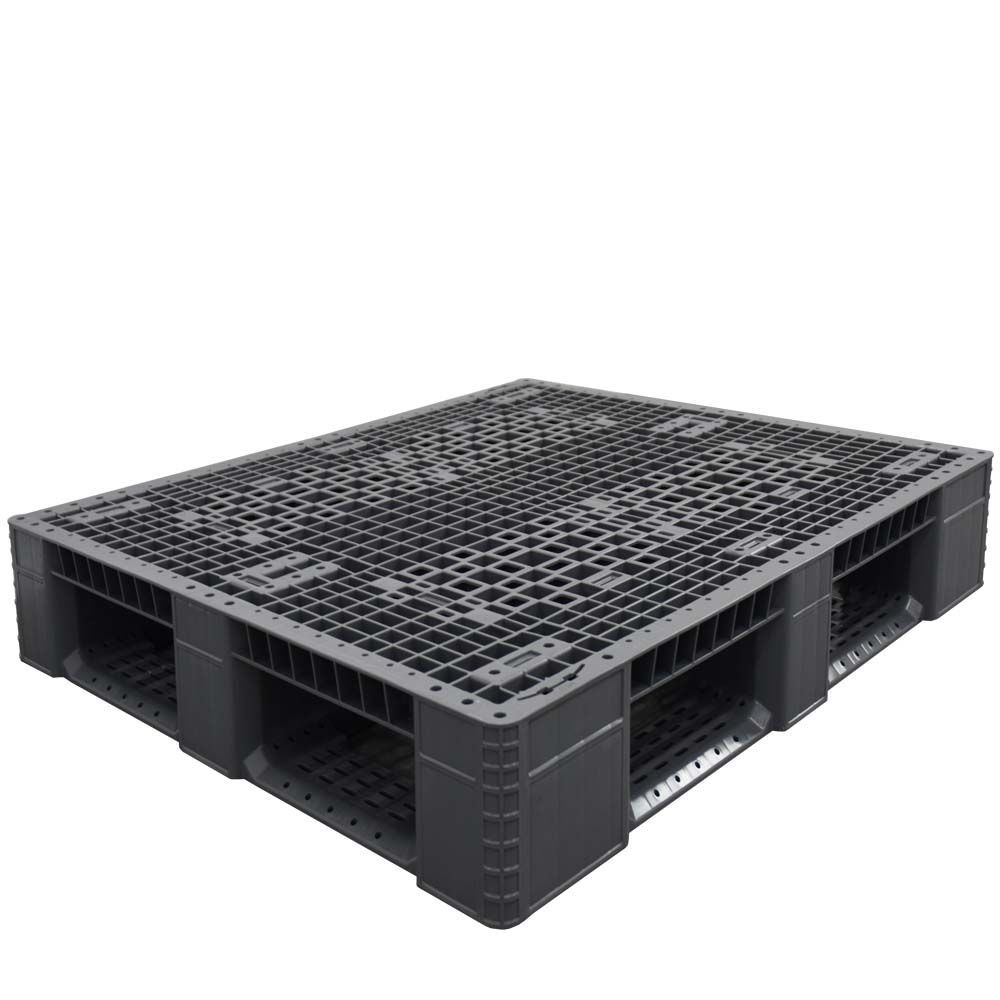Plastic Pallets
Plastic pallets are gaining popularity worldwide among various industries, such as food and beverage, automotive, and pharmaceutical. They are increasingly recognized as a sustainable solution for many businesses and their supply chains, especially as more companies move away from one-time-use packaging like wooden pallets and cardboard. With their durability, cost-effectiveness, and eco-friendliness, plastic pallets have become essential to the green supply chain management (GSCM) movement.
DuraGreen® pallets are engineered to withstand repeated use while providing superior strength-to-weight ratios. Plastic pallets are environmentally sustainable and cost-effective, reducing freight and load weights, and can be easily stacked or nested for return shipping and storage. Their nonporous plastic makes them easy to clean and disinfect, preventing moisture absorption, mold, and bacteria growth.
40 x 48 Nestable Pallet
The 40" x 48" General Purpose Nestable Pallet, with its injection-molded, one-piece construction, provides a strong, minimally deflected hygienic design. The pallets have a flow-through design with a ventilation deck and drain holes in each leg, making them easy to clean. The pallet is manufactured with 100% plastic, which means it is non-porous and will not absorb moisture or odor like unhygienic wooden pallets.
Benefits Include:
- Load capacity up to 2,750 lbs.
- Molded-in texture to minimize load shifting
- Easy to clean hygienic design
- All plastic construction provides product protection with no nails, rust, or splinters
- Resistance to chemicals, moisture and odor absorption
- 4-way forklift and pallet jack accessibility for easy movement
- Ergonomic handles improves worker safety
40 x 48 Rackable Pallet
40" x 48" rackable plastic pallets optimize storage and reduce product damage that wood pallets or skids can cause. The standard 40" x 48" footprint makes the rackable pallet ideal for the food, beverage, and pharmaceutical industries. The high-pressure injection molded design can withstand the demands of any application, from general distribution and storage to blast freezers. The pallets have a flow-through design with a ventilation deck, which makes them easy to clean. They are engineered to be stronger but lighter, saving you money in shipping and outlasting similar pallets.
Benefits Include:
- Standard 40" x 48" footprint is ideal for the food, beverage, and pharmaceutical industries.
- RFID slots allow for RFID tags to be loaded by the end user.
- Easy to clean hygienic design.
- All plastic construction provides product protection with no nails, rust, or splinters.
- Resistant to chemicals, moisture and odor absorption.
- 4-way forklift and pallet jack accessibility for easy movement.
- Low profile runners promote easy use with manual equipment.






